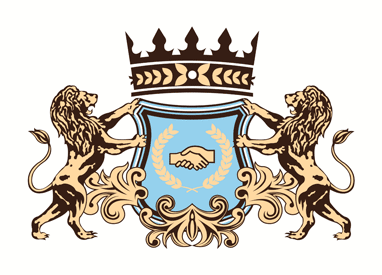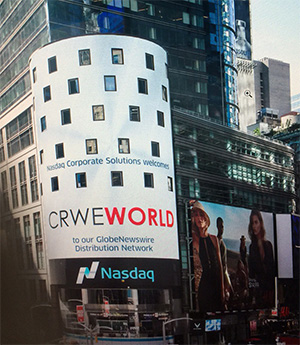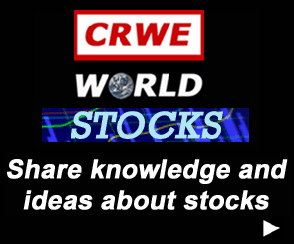NEO Battery Materials Scaling-Up Production to 20 Tons Per Year for Mass-Producibility Testing
TORONTO, Feb. 06, 2025 (GLOBE NEWSWIRE) --
- Scaling-Up Silicon Anode Production Capacity to 20 Tons Per Year for:
- Increasing Supply Requirements Among Downstream Partners, Particularly For Use and Tests in Full Cell
- Initiating Mass-Producibility Testing to Prepare for Factory-Level Production
- Mass-Producibility Testing: Critical to Ensure Quality Assurance, Process Optimization, and Cost Control
- Notice of Allowance for Silicon Anode Patent from Korean Intellectual Property Office
NEO Battery Materials Ltd. (“NEO” or the “Company”) (TSXV:NBM) (OTC: NBMFF), a low-cost silicon anode materials developer that enables longer-running, rapid-charging lithium-ion batteries, is pleased to announce the production scale-up to 20 tons per year to accommodate the increasing demand for NEO’s high-performance silicon anode products and to initiate mass-producibility testing to prepare factory-level production.
Production Scale-Up & Initiation of Mass-Producibility Testing
As announced on January 7, 2025, NEO’s P-300 silicon anode demonstrated breakthrough battery capacity and cycling performance. These results reinforce the P-300 series as a strong commercial candidate for integration in lithium-ion batteries. In parallel with full cell1 evaluations for long-term performance validation, NEO is undertaking efforts to scale-up production to 20 tons per year to meet growing silicon anode demand and to initiate mass-producibility testing.
The scale-up for NEO’s silicon anodes will first accommodate the increasing customer requirements for material supply. The high-performance P-300 series has mainly driven demand among downstream partners, as the product is ideal for silicon-graphite anodes2. For supporting supply, NEO’s production expansion plan will implement additional equipment, larger batch processing capabilities, and an optimized synthesis method to increase capacity. Additional facilities in Gyeonggi Technopark have been secured as part of the scale-up.
Concurrently, the Company will conduct mass-producibility testing to optimize the manufacturing process from pilot-scale to factory-level production. Mass-producibility tests will ensure that P-300 silicon anodes can be manufactured in large volumes without compromising quality or performance: these tests will further identify potential bottlenecks, refine process parameters, and control costs. With a proprietary particle size and structure technology and a modular, scalable process, NEO expects to scale production efficiently to the mass-production level.
Notice of Allowance for Patent from Korean Intellectual Property Office
NEO Battery Materials has received a Notice of Allowance from the Korean Intellectual Property Office (“KIPO”) regarding a patent named Composite nanoparticle comprising non-carbon nanoparticle and carbonaceous layer thereon, and process of preparing the same. KIPO has granted the patent application under Article 66 of the Korean Patent Act. The patent will be duly registered upon payment of the registration fee.
1Full Cell: Lithium-ion battery comprises all four core materials (cathode, anode, separator, and electrolyte). Generally, battery anode materials proof-of-concept and optimization are completed with half cells in which only the anode, separator, and electrolyte are used with a lithium-metal counter electrode that may supply infinite lithium-ions. Full cells have a limited number of lithium-ions, given that commercial-level cathode materials retain a limited supply of lithium-ions compared to lithium-metal. Consequently, capacity retention is heavily affected by Coulombic efficiency at every charging cycle.
2Silicon-Graphite Anode: For commercial-level lithium-ion battery anodes, silicon anodes cannot wholly replace graphite anodes. Hence for certain batteries, silicon anodes and graphite anodes are mixed to form a blended anode called silicon-graphite anodes. On average, silicon anodes comprise approximately 5 to 10% of the anode material.
About NEO Battery Materials Ltd.
NEO Battery Materials is a Canadian battery materials technology company focused on developing silicon anode materials for lithium-ion batteries in electric vehicles, electronics, and energy storage systems. With a patent-protected, low-cost manufacturing process, NEO Battery enables longer-running and ultra-fast charging batteries compared to existing state-of-the-art technologies. The Company aims to be a globally-leading producer of silicon anode materials for the electric vehicle and energy storage industries. For more information, please visit the Company’s website at: https://www.neobatterymaterials.com/.
On Behalf of the Board of Directors
Spencer Huh
Director, President, and CEO
For Investor Relations, PR & More Information:
info@neobatterymaterials.com
T: +1 (437) 451-7678
This news release includes certain forward-looking statements as well as management 's objectives, strategies, beliefs and intentions. All information contained herein that is not clearly historical in nature may constitute forward-looking information. Generally, such forward-looking information can be identified notably by the use of forward-looking terminology such as "plans ", "expects " or "does not expect ", "is expected ", "budget ", "scheduled ", "estimates ", "forecasts ", "intends ", "anticipates " or "does not anticipate ", or "believes ", or variations of such words and phrases or state that certain actions, events or results "may ", "could ", "would ", "might " or "will be taken ", "occur " or "be achieved ". Forward-looking information is subject to known and unknown risks, uncertainties and other factors that may cause the actual results, level of activity, performance or achievements of the Company to be materially different from those expressed or implied by such forward-looking information, including but not limited to: volatile stock prices; the general global markets and economic conditions; the possibility of write-downs and impairments; the risk associated with the research and development of advanced and battery-related technologies; the risk associated with the effectiveness and feasibility of technologies that have not yet been tested or proven on commercial scale; manufacturing process scale-up risks, including maintaining consistent material quality, production yields, and process reproducibility at a commercial scale; compatibility issues with existing battery chemistries and unforeseen the risks associated with entering into and maintaining collaborations, joint ventures, or partnerships with battery cell manufacturers, original equipment manufacturers, and various companies in the global battery supply chain; the risks associated with the construction, completion, and financing of commercial facilities including the Windsor and South Korean facilities; the risks associated with supply chain disruptions or cost fluctuations in raw materials, processing chemicals, and additive prices, impacting production costs and commercial viability; the risks associated with uninsurable risks arising during the course of research, development and production; competition faced by the Company in securing experienced personnel and financing; access to adequate infrastructure and resources to support battery materials research and development activities; the risks associated with changes in the technology regulatory regime governing the Company; the risks associated with the timely execution of the Company’s strategies and business plans; the risks associated with the lithium-ion battery industry’s demand and adoption of the Company’s silicon anode technology; market adoption and integration challenges, including the difficulty of incorporating silicon anodes within battery manufacturers and OEMs systems; the risks associated with the various environmental and political regulations the Company is subject to; risks related to regulatory and permitting delays; the reliance on key personnel; liquidity risks; the risk of litigation; risk management; and other risk factors as identified in the Company’s recent Financial Statements and MD&A and in recent securities filings for the Company which are available on www.sedarplus.ca. Forward-looking information is based on assumptions management believes to be reasonable at the time such statements are made, including but not limited to, continued R&D and commercialization activities, no material adverse change in precursor prices, development and commercialization plans to proceed in accordance with plans and such plans to achieve their stated expected outcomes, receipt of required regulatory approvals, and such other assumptions and factors as set out herein. Although the Company has attempted to identify important factors that could cause actual results to differ materially from those contained in the forward-looking information, there may be other factors that cause results not to be as anticipated, estimated or intended. There can be no assurance that such forward-looking information will prove to be accurate, as actual results and future events could differ materially from those anticipated in such forward-looking information. Such forward-looking information has been provided for the purpose of assisting investors in understanding the Company 's business, operations, research and development, and commercialization plans and may not be appropriate for other purposes. Accordingly, readers should not place undue reliance on forward-looking information. Forward-looking information is made as of the date of this presentation, and the Company does not undertake to update such forward-looking information except in accordance with applicable securities laws.
Neither TSX Venture Exchange nor its Regulation Services Provider (as that term is defined in the policies of theTSX Venture Exchange) accepts responsibility for the adequacy or accuracy of this release.

© 2025 GlobeNewswire, Inc. All Rights Reserved.



















